Glencoe 1/32 XV-1 Convertiplane
The origins of the unconventional XV-1 can be traced back in the early 50s, when aviation designers tried to figure out ways to increase the contemporary helicopters' airspeeds.
Designated as XV-1 Convertiplane, that bizarre looking machine was built mostly of aluminum. The fuselage was a streamlined tube with a rear-mounted piston engine and a pusher propeller. The unorthodox design featured tapered stub wings with tail booms mounted on them and twin vertical surfaces, interconnected by a horizontal stabilizer.
The three-bladed main rotor was radically powered by blade tip pressure jets which were air-fed from twin air compressors driven by an R-975 nine-cylinder, air-cooled, radial engine. Amazingly, each rotor tip additionally featured a combustion chamber where fuel was burned, in order to increase thrust and allow the XV-1 to fly like a helicopter.
The prototype began tethered hovering tests in February 1954, with the first free hovering flight taking place the following summer.
By spring 1955, transition from vertical to horizontal flight took place, with the 200-mile airspeed barrier broken the following October, nearly 45 mph faster than the helicopter speed record of that time.
Luckily, both prototypes survived, now proudly residing at the United States Army Aviation Museum at Fort Novosel, Alabama and Smithsonian Institution's National Air and Space Museum, Washington, D.C. respectively.
The XV-1 was an interesting design that sounded attractive on paper, yet its complexity and lack of power did not allow it to show its design potential. Perhaps a similar, less unorthodox design that would delete the main rotor air feeding and link it mechanically to a more powerful engine would have been more viable.
It sounds quite incredible that by 1959, two years after the XV-1 program had been terminated and only two prototypes were built, a 1/32 mainstream model became available by ITC. Glencoe, used to treat us with reboxes of older/odder molds, accompanied with great decals (Scalemaster in most, if not all of the time) and somewhat refined instructions.
https://modelingmadness.com/review/korean/us/usa/penxv1.htm
Happy Modelling!
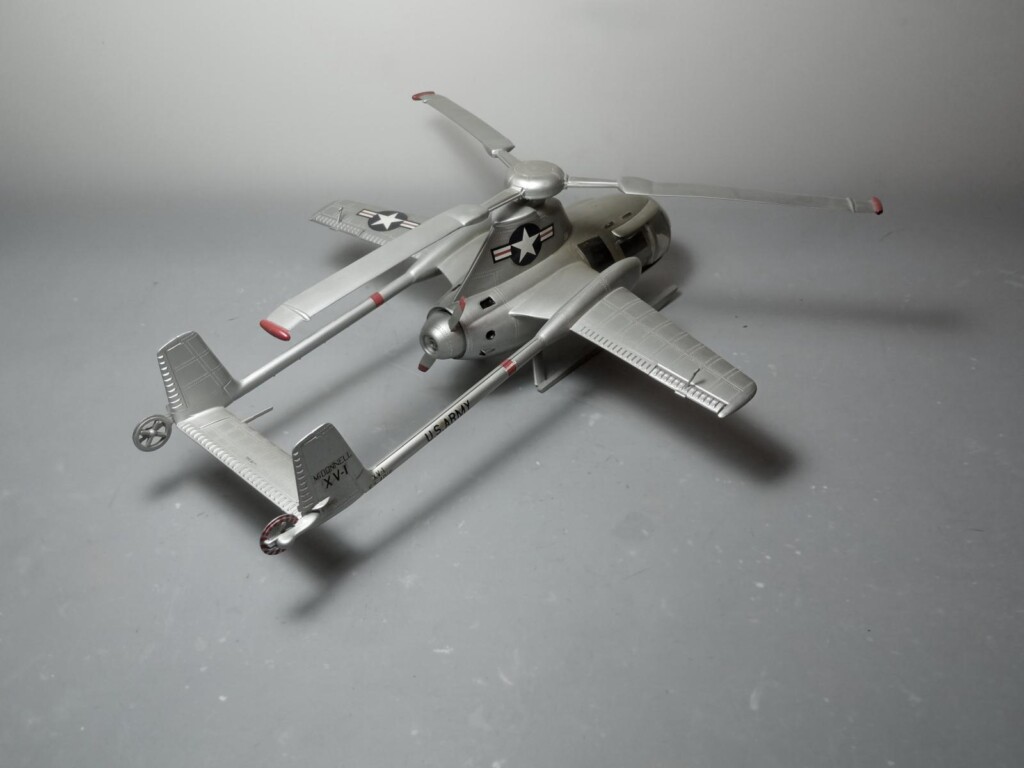
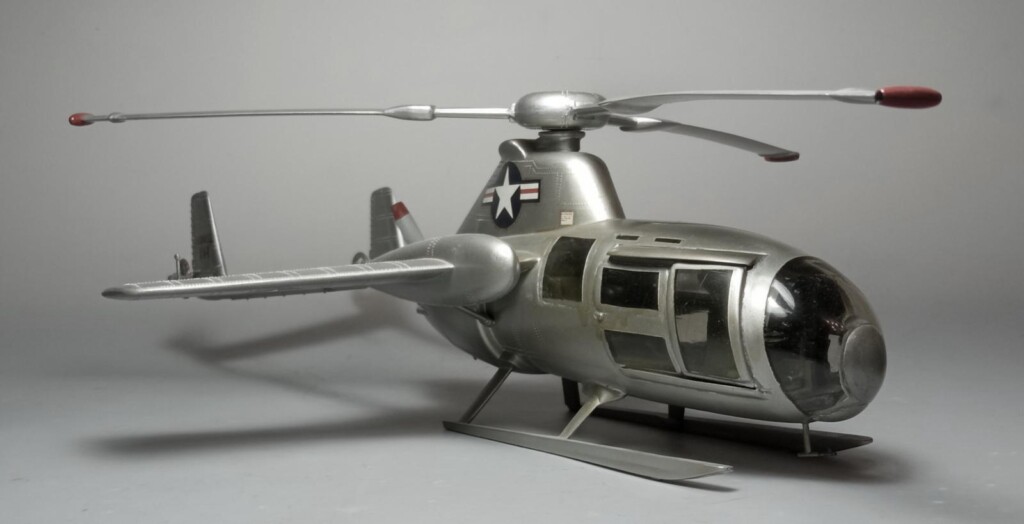
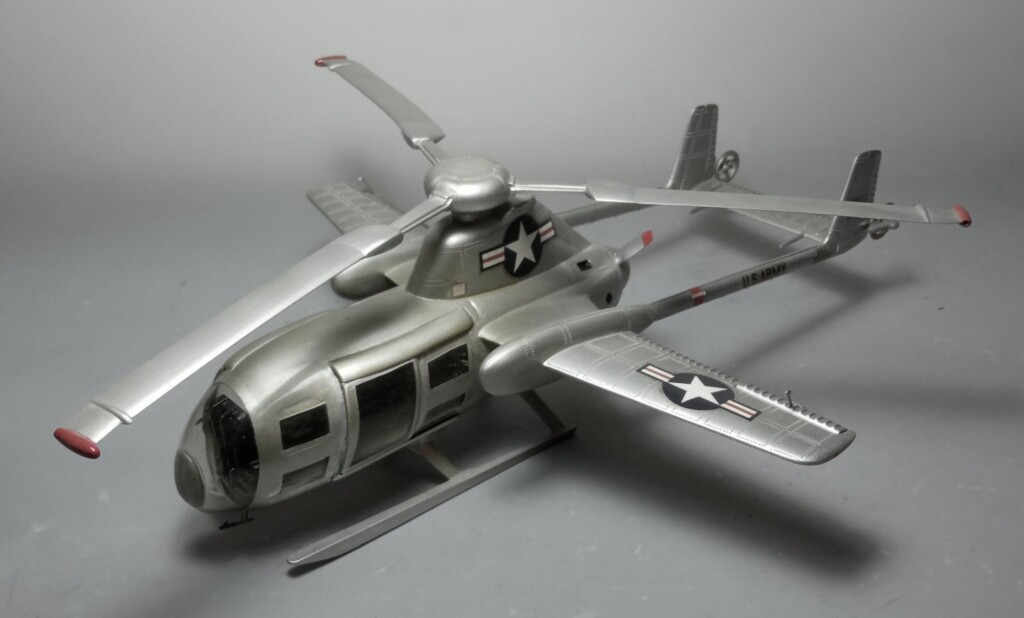
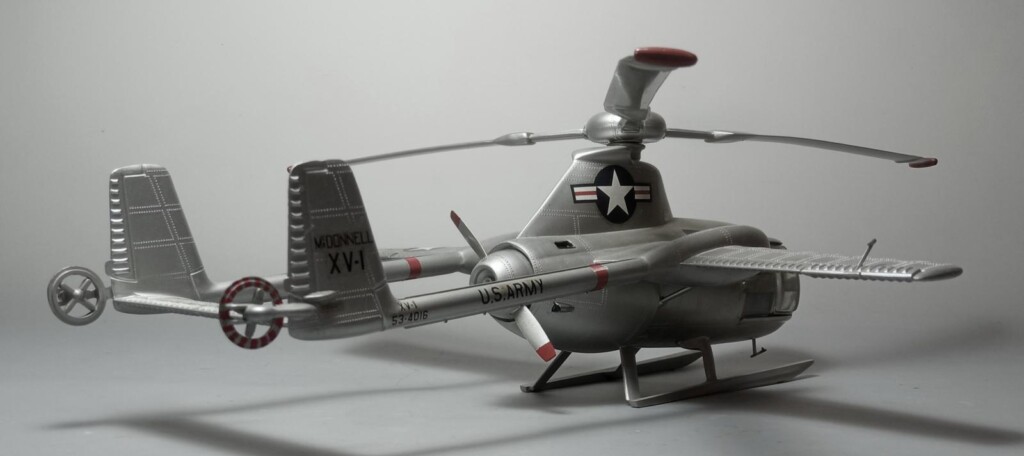
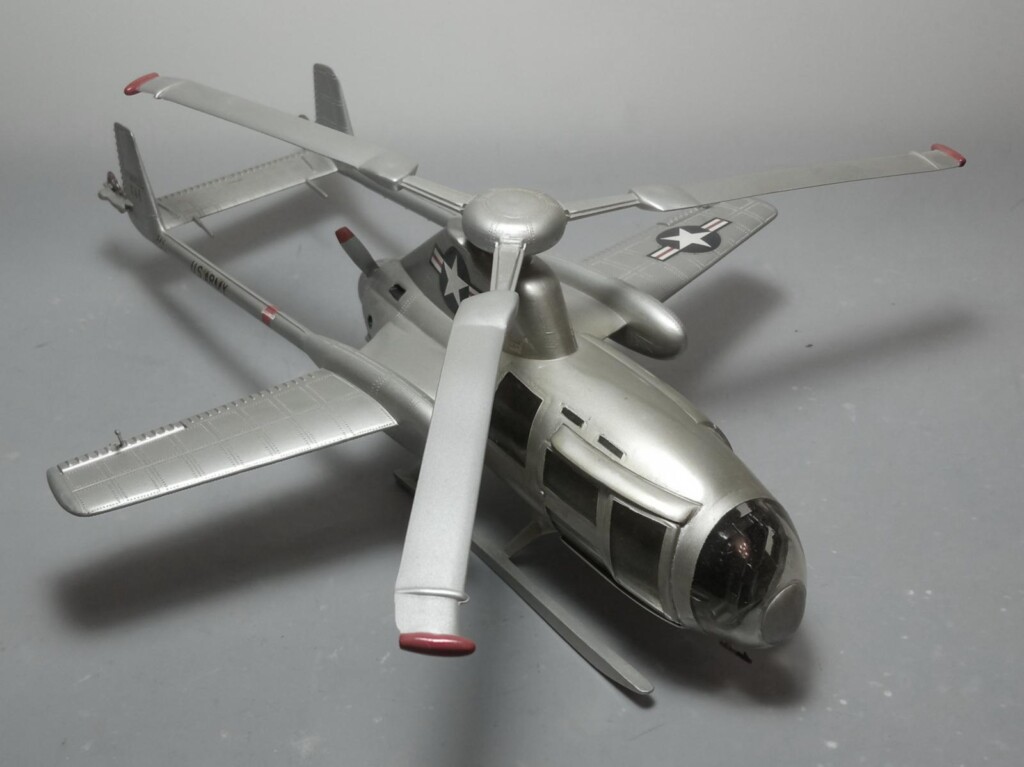
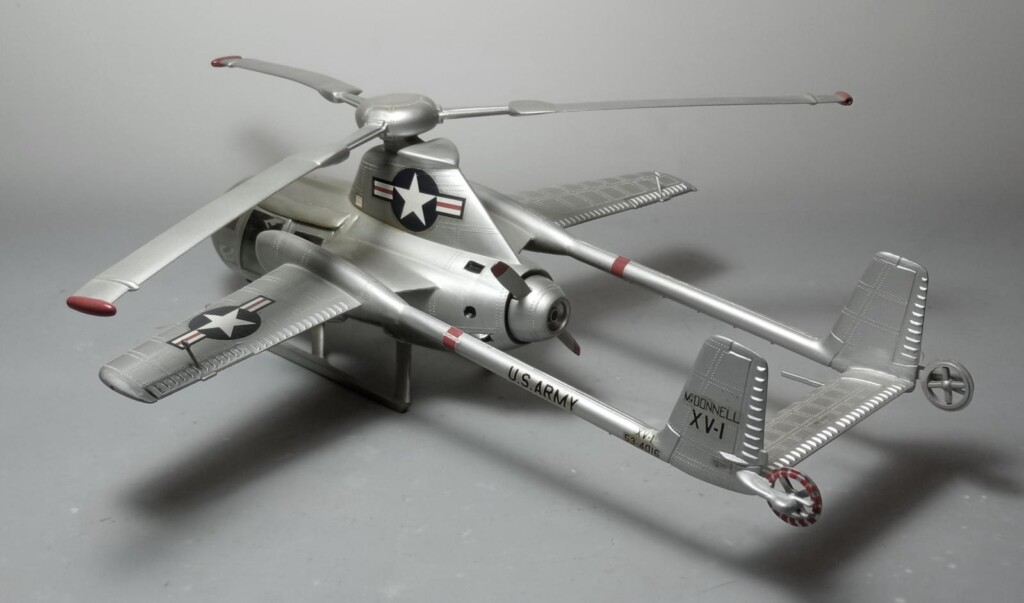
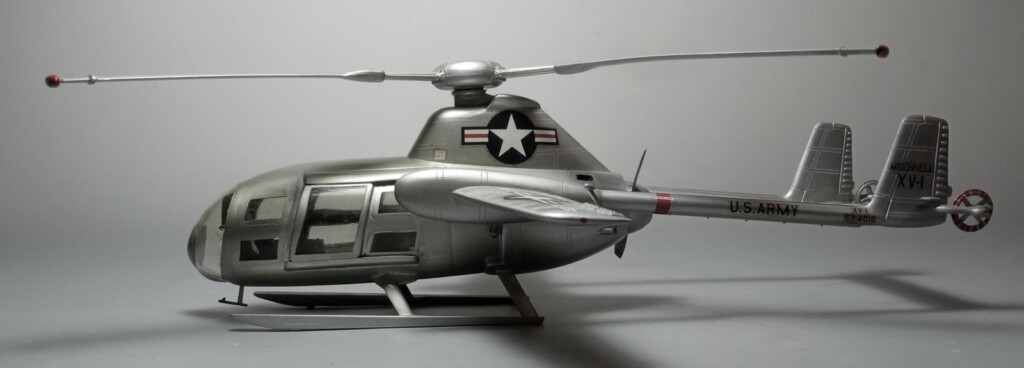
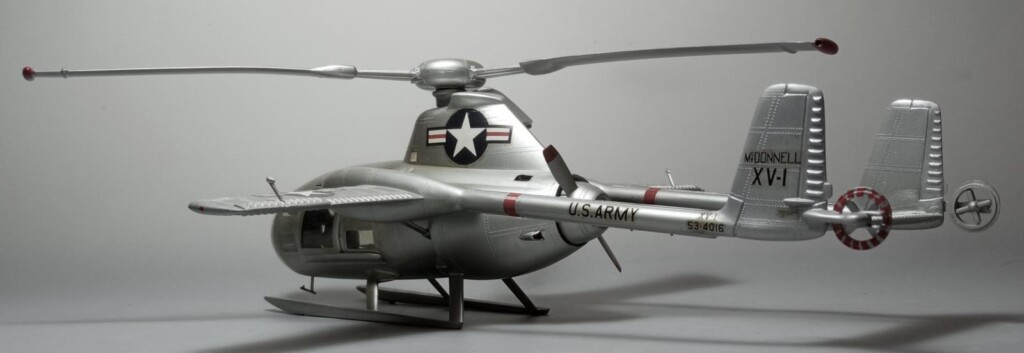
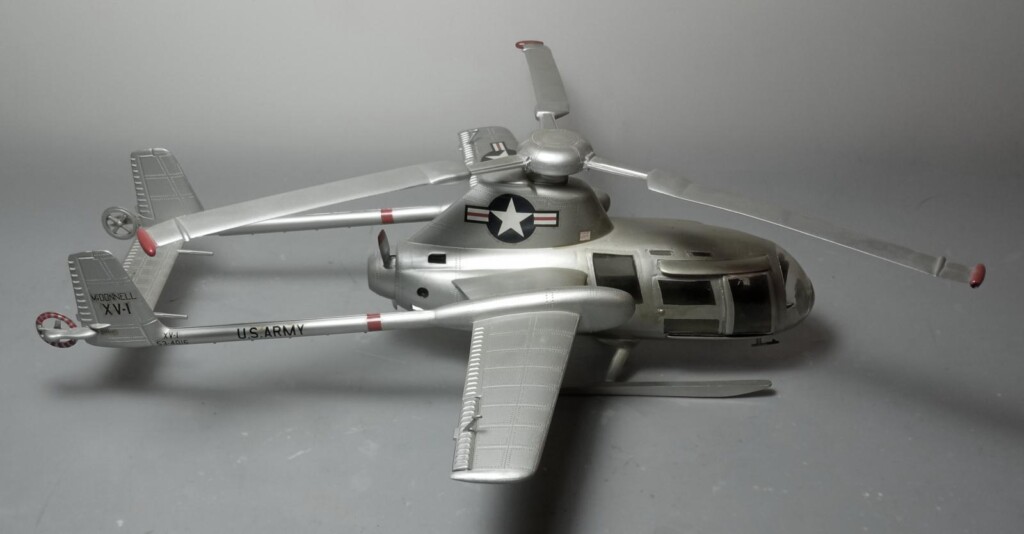
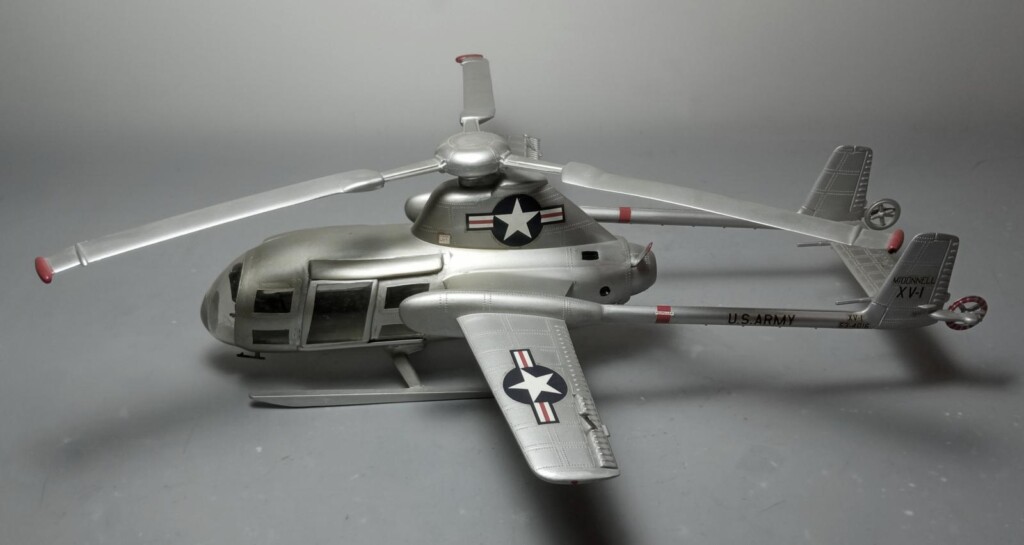
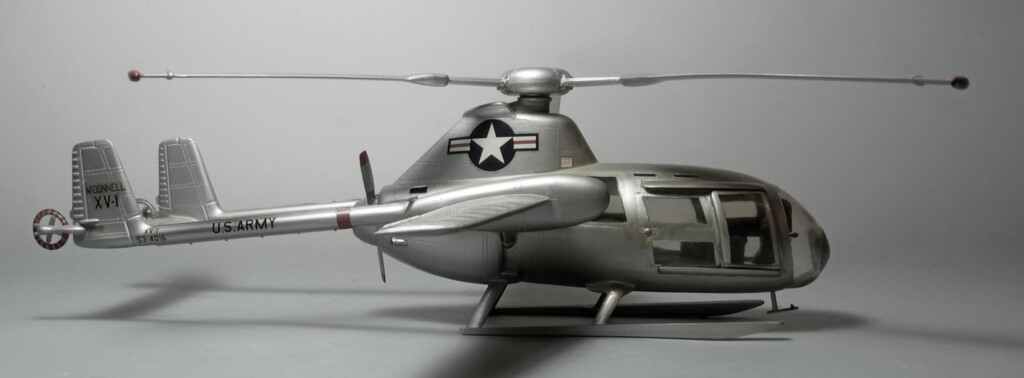
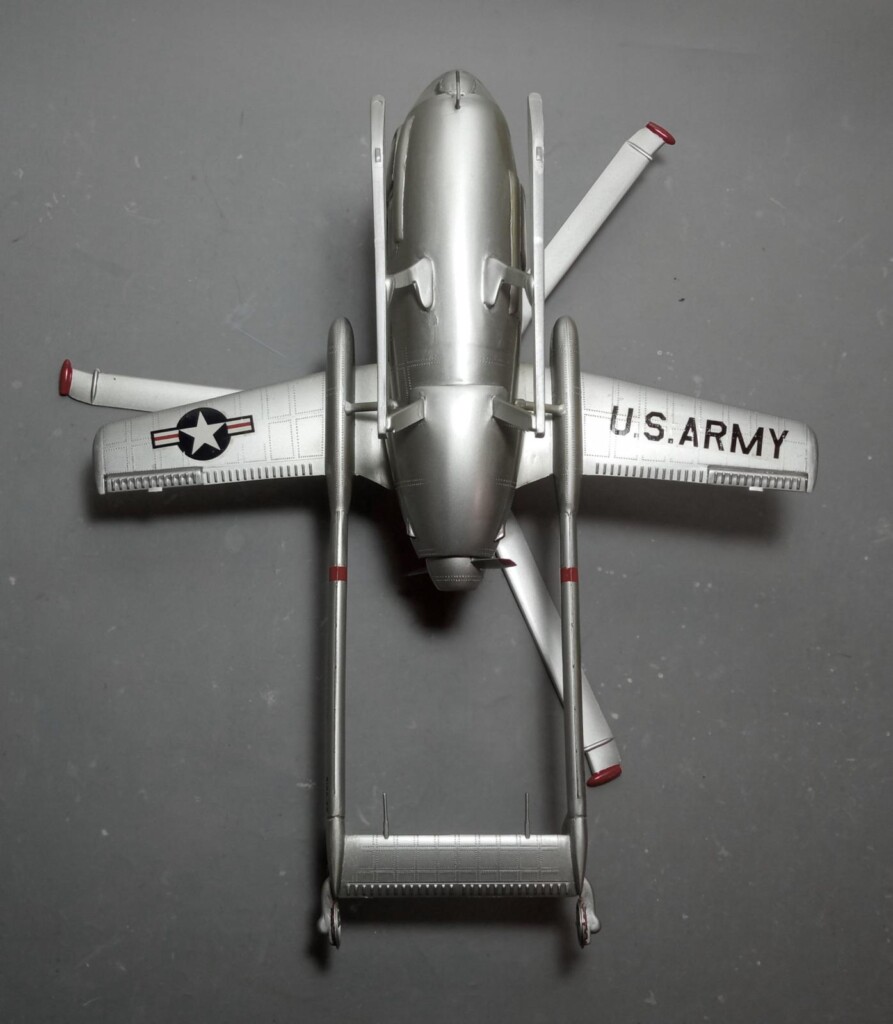
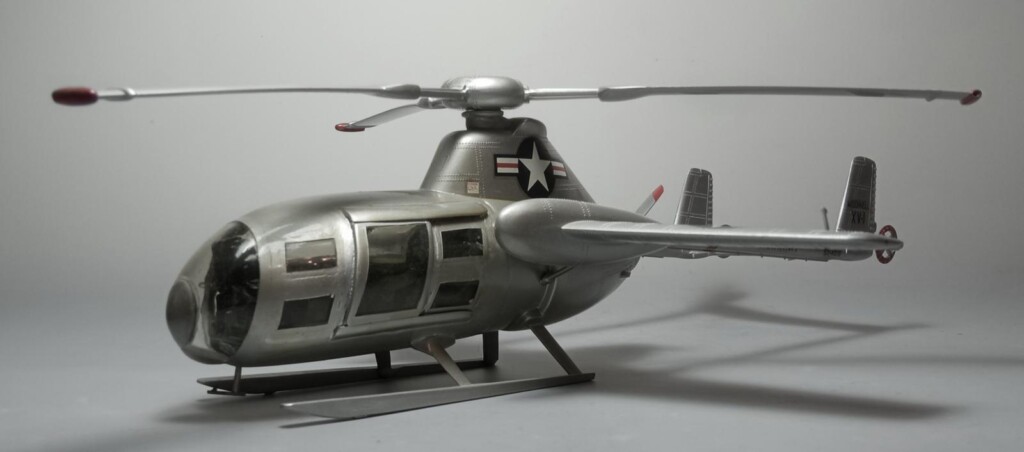
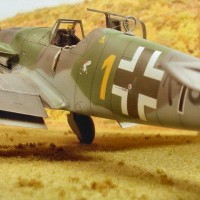
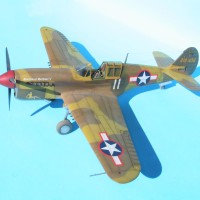
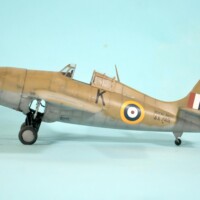
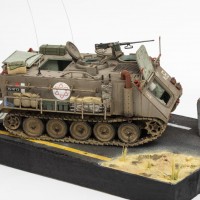
Wow, so cool, Spiros @fiveten! Man, you do come up with unusual, very interesting models, my friend.
Man, you do come up with unusual, very interesting models, my friend.  This is another one and it looks fabulous!
This is another one and it looks fabulous! 
Thank you so much, my friend @garybrantley!
Sounds like it was an old school model experience (lots of filling/sanding.) Tougher to do in NMF. Great result on what looks like challenging kit.
Thank you so much, my friend @dbdlee!
Never have heard before of this awkward aircraft.
Very interesting read, and a beautiful build (as always).
Thanks for sharing!
Thank you very much, my friend @alfred!
When I saw your posting of this Convertiplane over at MM I was taken aback by how how stylishly retro cool this “copter” looks. That’s due to your great looking silver finish. Love the rear “wheelie” things on the stabilizers. Is that what they’re for? I will be visiting the Smithsonian in a couple of weeks and will definitely check this this machine out with camera in hand, Spiros @fiveten
Thank you so much, my friend @eb801! These two are tail rotors to boost yaw authority.
Very unusual but wonderful build, Spiros @fiveten
Never heard about this convertiplane, I'm glad you shared the background of it.
Those kinds of tiny jets at the rotorblades were already present on some of the German helicopters in WWII. First time I heard about those tiny jets was during my build of the Doblhoff WNF-342.
Thank you kindly, my friend @johnb! Those jets must have been very noisy!
Unusual yet groundbreaking aircraft. Unique and well done my friend (@fiveten)!
Thank you very much, my friend @tolss!
Another blast from the past, Spiros (@fiveten). This model has been around for a long time. I think the original kit came out in the late 1950s. Very cool.
Thank you so much, my friend @gblair! Indeed, it is a 1959 mold.
I don't know this helicopter at all. I see for the first time. Beautiful work.
Thank you so much, my friend @milantesar!
Spiros, this is right up my street - you really have chosen a fascinating piece of aviation history! An excellent build of a model that undoubtedly has its pitfalls. You have mastered them all and created a grippingly good-looking representation of this absolutely rarely seen aircraft - my congratulations. Just great... and inspiring!
Thank you kindly, my friend @rosachsenhofer!
Quite the unusual aircraft and you did a marvelous job in replicating it. @fiveten
Thank you very much, my friend @jdtruby!
Beautiful build! I have this kit in my stash. The interior is basic - did you detail it?
Thanks so much, my friend @tomhering! No extra detailing in the cockpit, other than seat belts made from masking tape. Hopefully the thick transparencies blurr/distort everything.
I’m always impressed when anyone gets one of those old Glencoe models done. They are always challenging! Nice work!
Thank you very much, my friend @guitarhack5!
Great subject Spiros. I have this kit in my stash. It's nice to see one all built up and looking so beautiful. At the same time McDonnald was developing the XV-1, Bell was working on there mod. 204/XH-40 witch became the UH-1 Huey, the US Army's first jet turbine powered helicopter. We all know how that went!
Thanks my friend @curtisshawk! Yes, the mighty Huey!
Nice choice of builds, Spiros. An uncommon kit and a fantastic result. Kinda glad this concept didn’t catch on, not the most attractive aircraft. Seems like something from an early James Bond movie.
Thank you so much, my friend @georgeswork! Yes, a bizarre looking machine.
Spiros Pendedekas (@fiveten)
I really enjoyed reading your article. I never knew this aircraft even existed, and like you, I'm surprised it made it into kit form.
Once again you have done a marvelous job. Well done my friend.
Thank you so much, my friend @lgardner!
Weird but wonderful, Spiros, a beautifully finished model as we’ve come to expect from you.
Thank you kindly, my friend @chinesegeorge!
OK then - it's definitely weird. Under which rock did you find it? Anyway it's a superb piece of work on a very unique prototype and very old kit.
Thank you kindly, my friend @christopher!
It was a forgotten kit found at the shelves of a now closed hobby shop in Athens. I kept on seeing the box art, wondering what this machine really is!
This work on this old old kit ! A unique model of a unique aircraft.
Thank you so much, my friend @ssgt!
Very unique and very well done, Spiros
Thank you so much, my friend @gwskat!
Another kit I’ve never seen built. Well done, Spiros!
Thank you very much, my friend @j-healy!
A real blast from the past, Spiros. Always wondered what this kit looked like. Nicely done.
Thank you so much, my friend @roofrat!
Very unusual! Great!
Thanks a lot, my friend @lis!